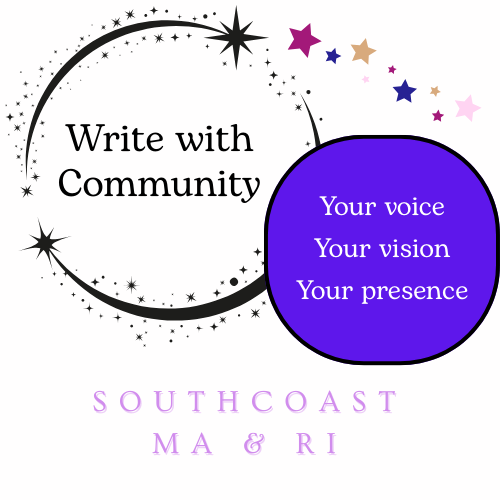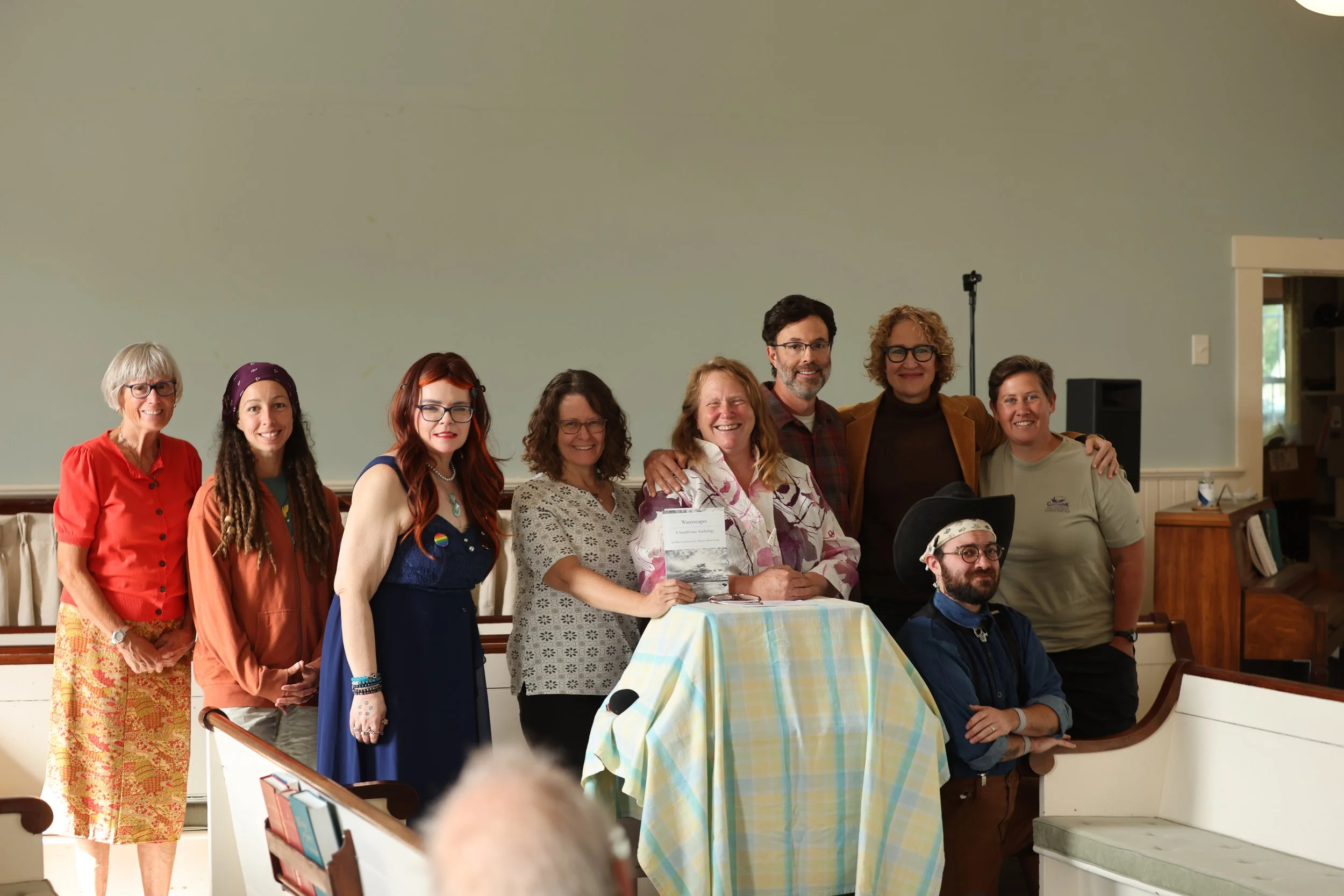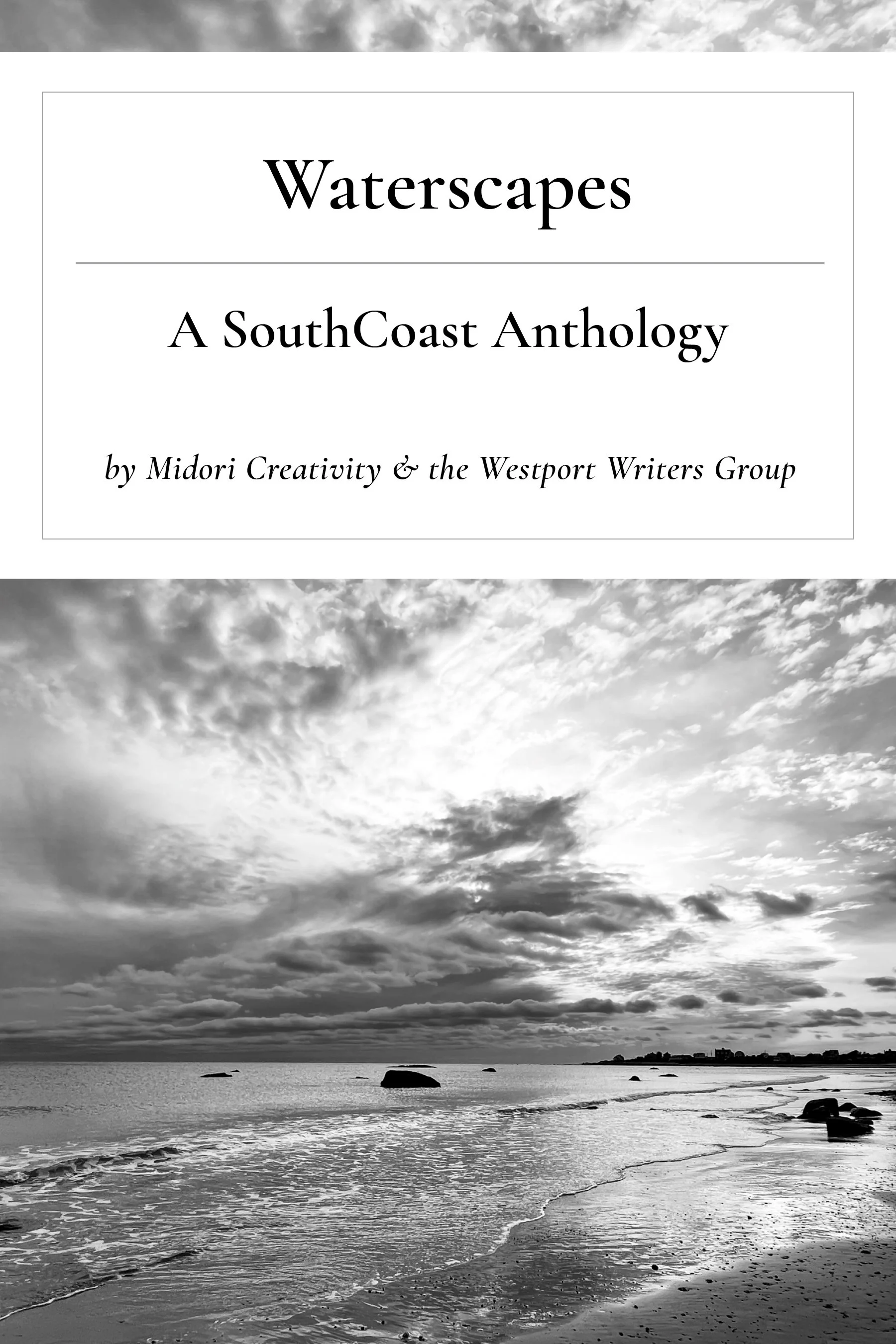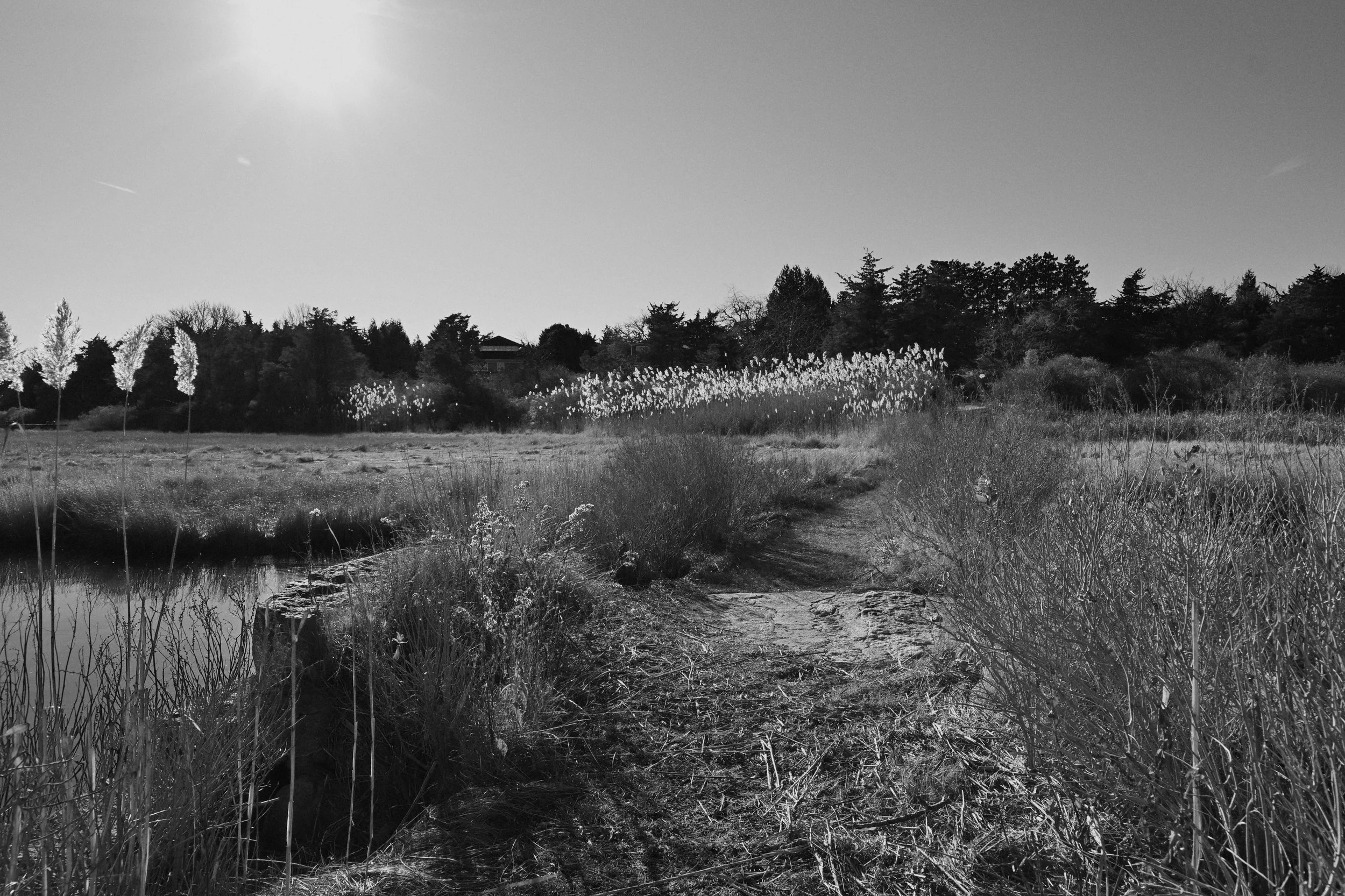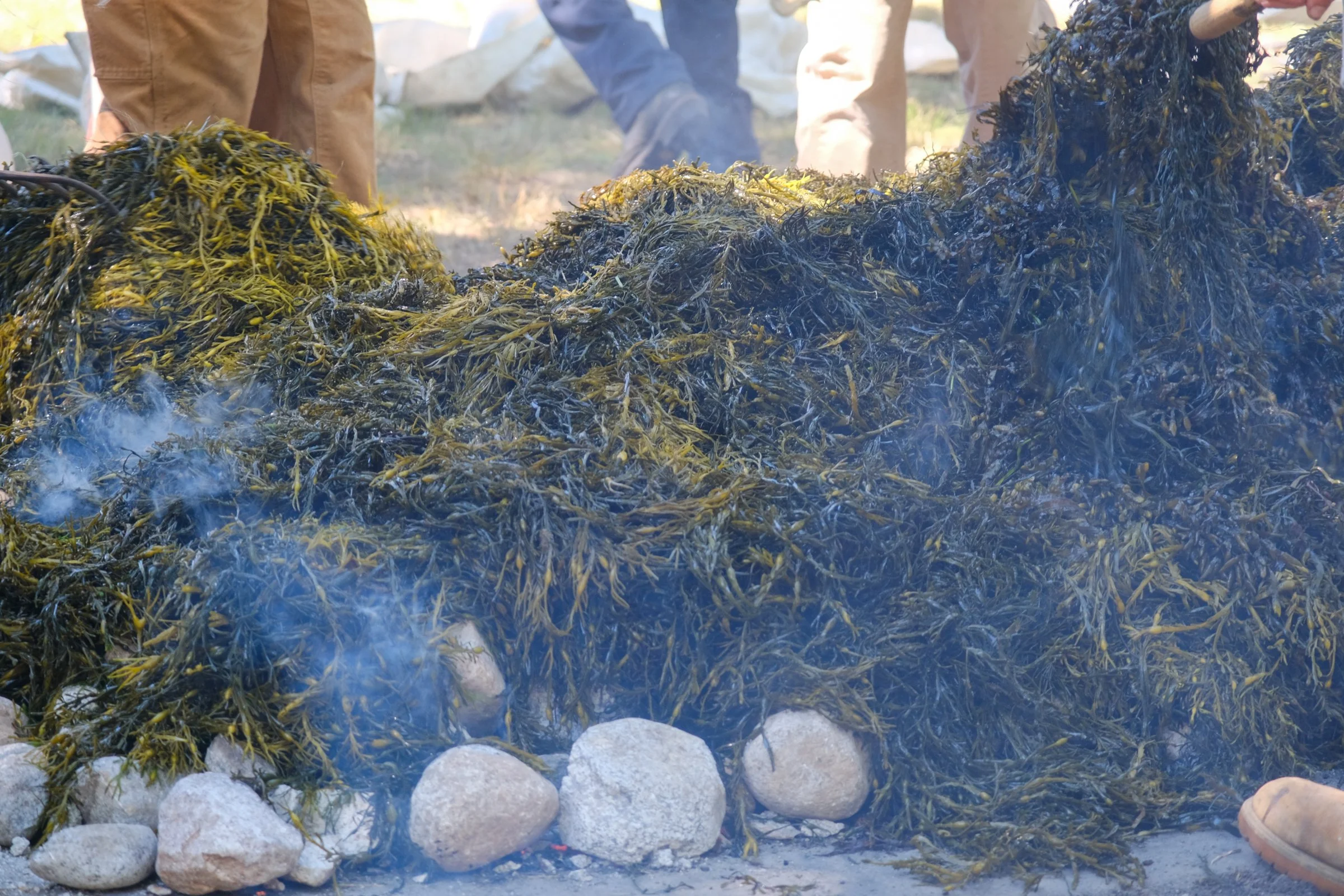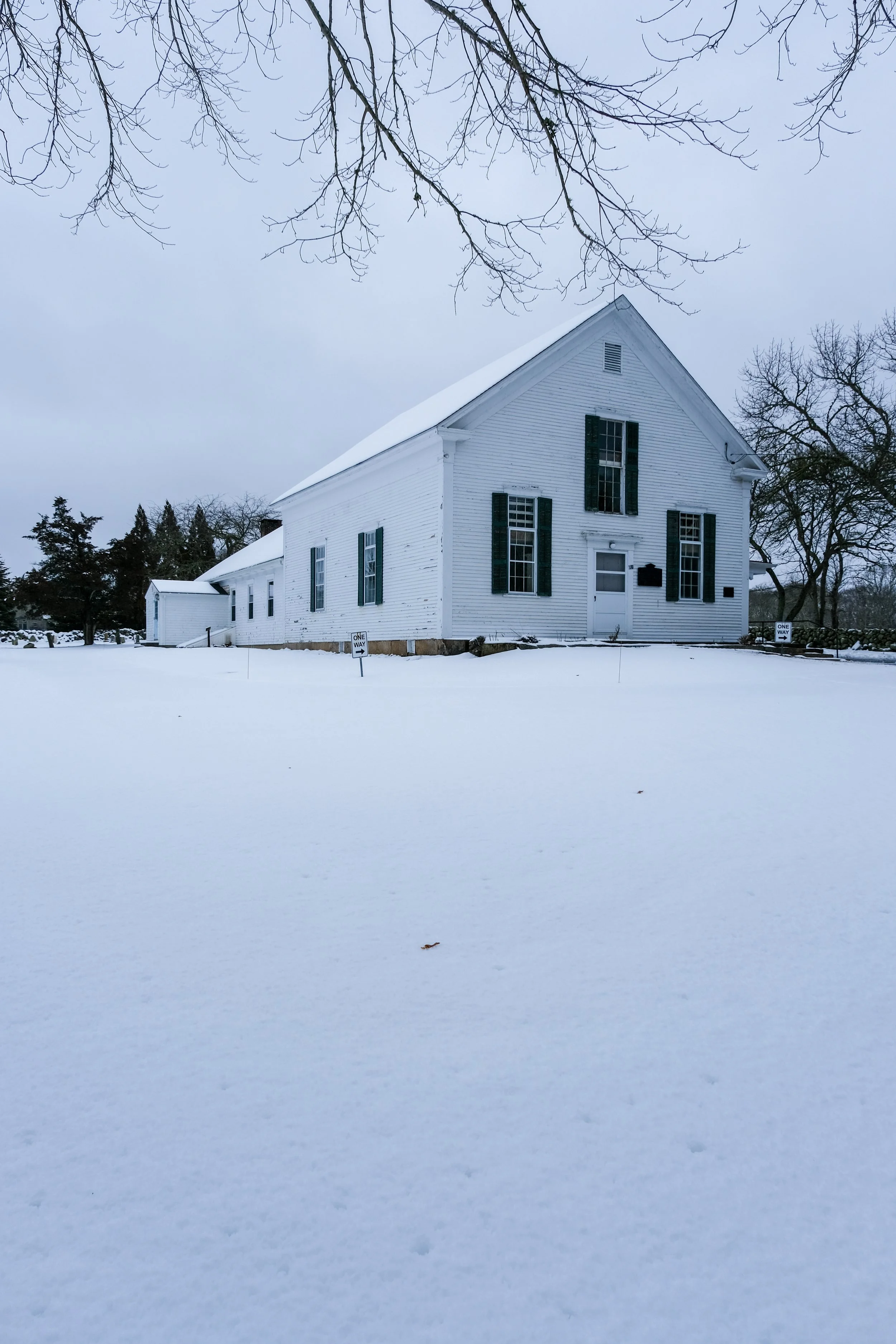Land, Water, Spirit reading at Allen’s Neck Friends Meeting
On the last day of summer a group of storytellers met at a meeting house deep in Dartmouth, Allen’s Neck Friends Meeting, to share their stories. The event had a name: “Land, Water, Spirit.” I was one of the storytellers, a writer who also volunteered to write up my experience of that day.
Hanging in the air like a melodic phrase waiting for resolution, so to speak, was a question that event organizer, Quaker, and storyteller Midori Evans posed to us beforehand: “How can we develop a land ethic that becomes second nature to our daily thinking, living and creative expression?” This was a lot to ponder beforehand but a welcomed guiding throughline during that sunny afternoon.
Climate change, global warming, extinction events—when it comes to the storytelling about the environment as of late, it feels like there’s less and less room for the poets, for the fiction. This is the era of the scientist, of STEM, of utility and efficiency, of emergency and data and financialization. Or at least it feels like this if I’m not careful to ground myself. For that 90 minutes, this question Midori posed was that grounding. It sorta got in my mind’s craw or became the cerebral craw as I sat there in that pew, eying one of the blankets draped over the backrest and cap rail, while the people took up the podium.
James Cronin, the first of the writers to do a reading—and all the writers were reading their contributions to Waterscapes: A SouthCoast Anthology – unfortunately couldn’t make it. This means that while he wasn’t there to read his poem, “The Water’s Edge,” something I’ve been lucky enough to hear him recite before, I could read the actual poem, along with the photo he was assigned to be mindful of when composing because I had a copy of the anthology. And on that front, we were all tasked with providing an image of the South Coast water. For Jim, it was “Cow Path-3, Westport Point,” by Charles Eastman.
There’s something about reading a poem. The word placement or grammar can rise up and slap you in the face when least expected. In a good way! Think e.e. Cummings. Or that scene about a semi-colon versus a comma in “Wit” (aka “W;T”), the one-act play by Margaret Edson, which won the Pulitzer for Drama in 1999. Emma Thompson played the main character in an HBO version.
Jim’s poem is a short meditation about a cow path on Westport Point. Quickly, though—and this economy is why poetry can be so powerful—Jim leads you, like one of the grazing, hungry cows, to this sudden and complete launch into “things are getting Biblical” and “I, too, will die.” And these are my quotes. In Jim’s words:
“Now on a winter’s day, a lower sun / distinctly lights this bleak cradle of life. / The spongy path and my stiff steps foreshadow a fallen world where this scene and its pledge / of ebb and flow is at risk and my own run / faces the implacable subsidence of life.”
Mmm…
Krista Allen, another one of the writers in Waterscapes, read a poem about surfing. Except that it was also about death. Or the brush with death that surfers often encounter with each iconic attempt to ride the wave. Surfer poetry. This imagery filled the room, christening the afternoon with our first story read aloud. Midori was careful to remind us all that in this space, the next up at the pulpit was invited to take as long as they’d like to process what they had just heard. And this collision of a poem about near-death-by-surfing and then silence in a room filled with pews and blankets washed over me in a way that I didn’t know I needed that day. And still, I turn to it on pages 15-17 and revisit that collision and that near-death.
Eventually the silence ended, and the first of the land storytellers began. Seedkeeper and farmer Bill Braun of “Freed Seed Federation” began with evoking the bucolic scene of their land. But then phrases like, “We’ve lost 93% of the diversity of fruits and nuts” and “gene-to-pathogen ratio” or questions like “What does this plant need and what do we need from this plant?” and recommendations like: “consider saving seeds—when you save them, the seeds learn…from pests, pathogens…” and then lush language like “small dormant body of life that is past, present, and future—all wrapped into one” happened.
This was an arresting call to action. I’ve already followed up with Bill and am excited to write up our next exchanges, along with my own journey with getting to know seeds in ways that I’ve not ever contemplated.
Amanda Barbosa, another steward of the land, followed up. She, too, left the room abuzz. Her experiences have much more to do with this exciting combustion of her experiences as a sacred gardener, yoga teacher and artist. I’ve already spoken with Amanda before the event and am looking forward to circling back to her. Her poem danced around the synergy between spirit and the land. She gives off “mystic” and “theologian” vibes that tangle up gardening and the body in ways that are so very much needed right now.
Another of the Waterscapes writers transported us into something dramatic and very “American,” as it is something many of our ancestors experienced: a dangerous journey across the ocean to a new place of hope. Titled “North Star,” Margot let us know this is the prologue to a novella, and wow. We immediately were invited to jump into the world of a little girl named Emilia who doesn’t quite understand why she needs to leave her brother and her life as she knew it. “‘Make yourself small,’ a woman hissed.” This starts on page 12, and almost like a poem, it packs such a punch for such a short ride, so to speak.
“The Memory of a Ship,” read by Kathryn L. Hamilton, was such a lovely transition between epic ocean journey to the deafening quiet of a ship wrecked and withering on the shore. Kathryn added to her poem essential backstory, as her piece was inspired by an Arthur Moniz painting. This is one of the numerous reasons why it’s so great to hear authors read their work. This “extra” information about their story adds depth and dimension, allowing the reader even more out of the page. She also shared commentary of how shipwrecks can also provide “safe havens for estuaries and fish.”
This meditative place we found ourselves in was furthered with a written piece by another land steward, Sarah Cogswell. Just as profound, Sarah was also hilarious. Titled “Ghosts in the Garden,” Sarah harkens to the mind place so many of us find ourselves in when weeding. “In the field, I can’t help but remember things.” This was some of the best writing I’ve heard in years. I hope Sarah commits this to paper at some point. It was riveting, profound, and laugh-out-loud funny.
Midori Evans, the woman organizing the event, along with the Waterscapes anthology, took up the podium next with a reading of her take on what Allen’s Neck has been known for since 1888, the annual Allen’s Neck Clambake. What reads as naturally as if she had documented actual moments of a bake but the Platonic idea of a bake, “Rockweed” took over the room.
I so very much wish I could have known who in the room had been to the bakes, what they had to say about her story—if names were changed but everything else was the same-sorta-thing-vibes…
When you look up Allen’s Neck Meeting, you will immediately see that this is “the place” for clambakes. Ben Berke of Rhode Island PBS has recently written about it, along with the South Coast Almanac. This is one of these customs that keeps communities tight, keeps tradition alive, and makes you feel good about the world. What a gift to capture this sacred event in the anthology.
Midori also included two selections on the back of program that helped to further some of the themes of the afternoon. One piece, a letter in a Quaker journal, “The Friend,” was by Pamel Umbima. The other piece was titled, “Editorial Overview: Measuring Sustainability: An Artists Reflection on the 19 years since Wendell Berry’s ‘Nature as Measure,’” by Anna Metcalfe. Both of these selections are worth having another event to process all of this, together. I hope this happens.
Next up was my reading another Waterscapes story, “He Built Tall Ships There.” My backstory for this piece was that I was reading Truman Capote at the time I was composing what I thought was going to be something on Paul Cuffe’s shipyard, something you could see from Hixbridge Road. But like so much of what we writers write, the story started to turn into a different direction. A somewhat creepy element entered into the story, along with a complete departure from what was supposed to be more about building 128-ton brigs at the Head and how they’d be carried onshore at Hixbridge, and then eventually outfitted at the Point. This included bringing in two of my former professors who are best friends and love to argue, a wine tasting at Westport Rivers, and then an eventual visit to the Pacquachuck Inn.
I also got to share a little bit about my own upbringing on a dairy farm in rural Minnesota (near Luverne, if that means anything to anyone). I was once part of the factory farming and “big ag” machine. I used to bottlefeed calves before and after school. Sometimes there’d be over 60 calf huts. I had callouses on my hands. In middle school. It was not an easy life. I was shielded from the cruelty of separating calves from their mothers, of dehorning cows, and then the immense pollution all the chemicals cause. There were stories of cancer clusters and higher rates of Parkinson’s—and this was back when I still lived there—but no one organized to do anything about it. From what I hear from my family, nothing has changed. This life I once lived was so different from what I was experiencing in the Meeting. I am so grateful.
Lastly, Maxx Fidalgo joined us to talk about Round the Bend Farm. What an amazing ambassador for the farm. He is an events coordinator and assists in the executive directing, along with getting his hands dirty. “We’re essentially a restorative community.” He went on that they are “slowly healing with different plants we’re growing… It’s that slow growth…same tools when restoring a painting….not the most conventional type of creativity…it helps us, the animals. That’s what we’re doing.”
Meeting houses have long overseen the community gather together to talk about what matters most. And then, sometimes, to gather together to stuff our faces with deliciousness. And then write stories and poems about such activities and then some. Like the clambake, I hope that “Land, Water, Spirit” happens again and again because we really need it.
